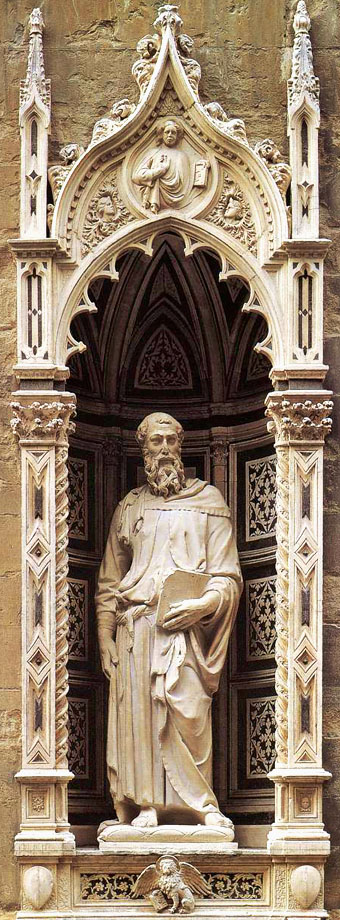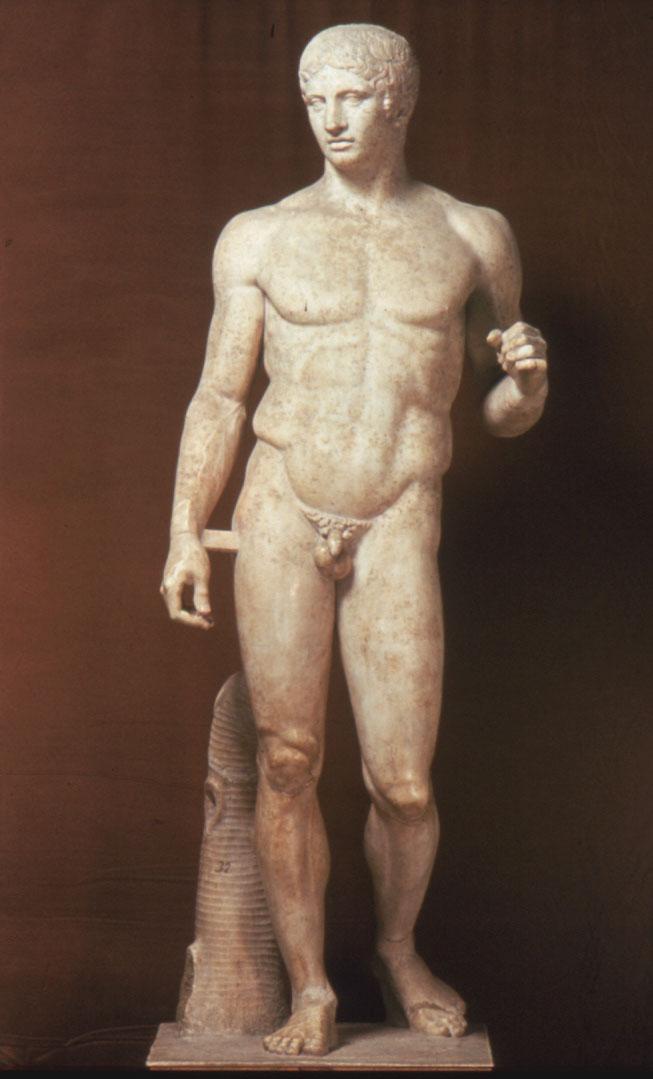 Donatello’s Saint Mark sculpture in the round from the niche at Or San Michele is a wonderful example of the propensity of Renaissance artists to borrow from, adopt, and re-engage in methodology and practice of artists from antiquity; specifically, the High Classical period of Ancient Greece.
Donatello’s Saint Mark sculpture in the round from the niche at Or San Michele is a wonderful example of the propensity of Renaissance artists to borrow from, adopt, and re-engage in methodology and practice of artists from antiquity; specifically, the High Classical period of Ancient Greece.With this amazing sculpture, we see a nod to Polykleitos’ Doryphoros, or Spear Bearer. Like Polykleitos, Donatello has demonstrated a highly skilled working knowledge of cannon of proportions. Here, Donatello imbued the essence of Polykeitos’ Prescription; imposed order, dynamic asymmetrical balance, motion at rest and harmony of opposites.
Most notably, we see Donatello’s reintroduction of contrapposto. Like Doryphoros, the stance of Saint Mark is very pronounced. We see an exaggerated drop in the left hip and shoulder, balanced by the rigidity and power of the Stain Mark’s right side. The slight turn of the head, versus profile or full on frontal harkens back to that of Ancient Greek methodology.
Where the Doryphoros is a nude, Saint Mark is fully clothed and covered in voluminous cloth. The folds the cloth do not serve to hide Donatello’s masterpiece, but accentuate and denote movement, energy; a living presence. As our text notes, Donatello was the first Renaissance statue to replicate cloth (in a statue) in this manner.

Scholarly Resource:
http://209.85.173.132/search?q=cache:FnRpfOhb90wJ:https://scholarsbank.uoregon.edu/xmlui/bitstream/handle/1794/8044/Hancock_Elizabeth_MA_summer2008.pdf%3Fsequence%3D1+polykleitos+prescription&hl=en&ct=clnk&cd=8&gl=us&client=firefox-a
Image of Roman Marble Copy Doryphoros
http://images.google.com/images?q=doryphoros&oe=utf-8&rls=org.mozilla:en-US:official&client=firefox-a&um=1&ie=UTF-8&sa=X&oi=image_result_group&resnum=1&ct=title
No comments:
Post a Comment